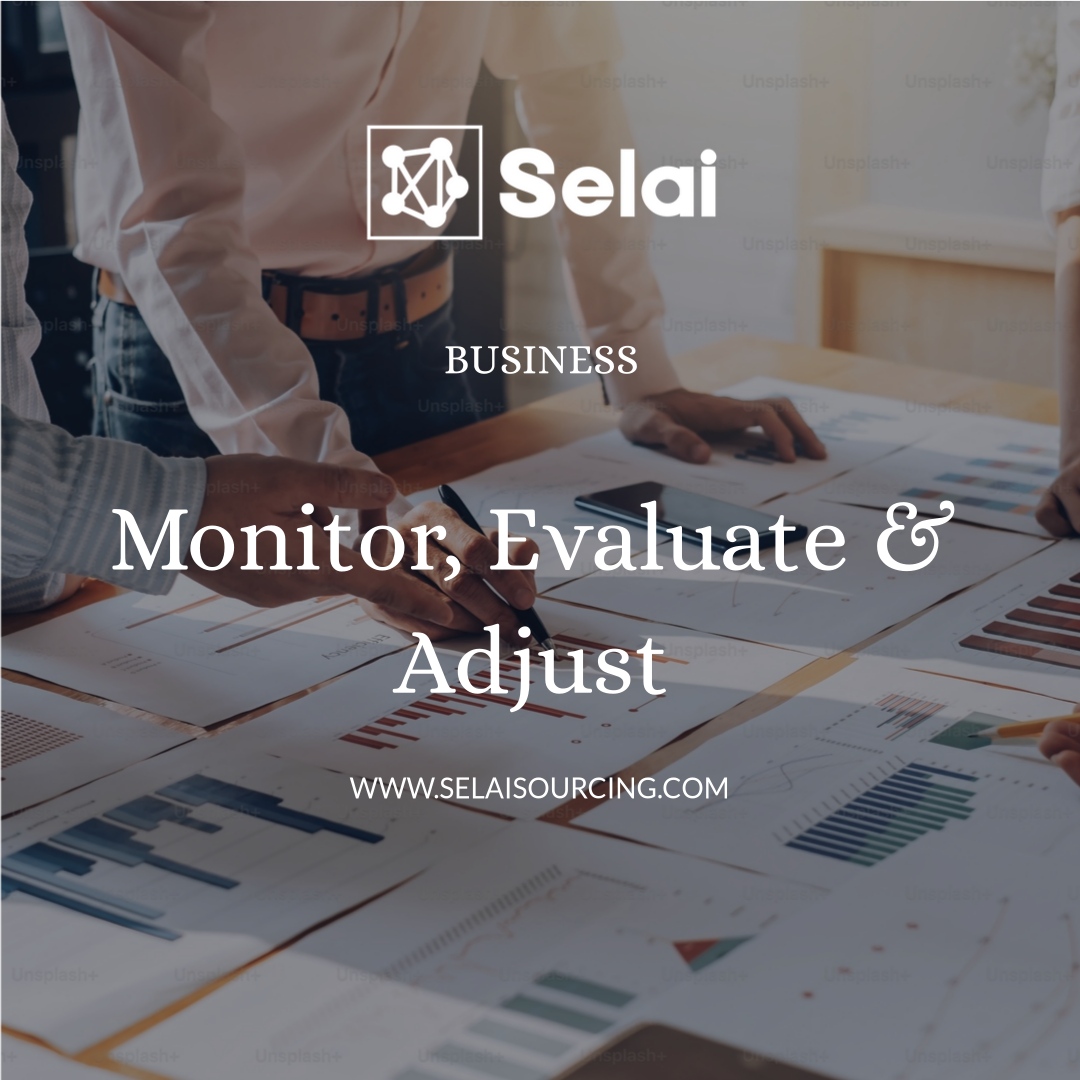
Monitoring, evaluation, and adjustment are integral components in managing a fashion brand effectively. This iterative process allows brands to track their progress, assess the impact of their strategies, and make informed adjustments to align with their goals better. Below is a detailed guide on how fashion brands can leverage this process for optimal growth and sustainability.
1. The Importance of Monitoring:
a. Ongoing Assessment:
Monitoring involves the continuous collection and analysis of data to assess the performance of various aspects of the business, such as sales, marketing, and customer satisfaction.
This ongoing assessment allows brands to identify trends, detect issues early, and make timely interventions.
b. Key Performance Indicators (KPIs):
Identifying and tracking relevant KPIs are crucial for effective monitoring.
KPIs provide quantifiable measures of performance, helping brands understand how well they are achieving their objectives.
2. The Role of Evaluation:
a. Insight Generation:
Evaluation is the systematic assessment of the data collected during monitoring to generate insights into the effectiveness and impact of strategies and operations.
It helps in understanding the correlation between actions and outcomes and provides a basis for informed decision-making.
b. Performance Benchmarking:
Comparing your brand’s performance against industry benchmarks or competitors helps in identifying your standing in the market and areas for improvement.
3. The Need for Adjustment:
a. Continuous Improvement:
Based on the insights generated through monitoring and evaluation, brands must make adjustments to their strategies, operations, and goals to optimize performance and rectify issues.
This process of adjustment facilitates continuous improvement and adaptability in a dynamic market environment.
b. Risk Mitigation:
Proactive adjustments based on monitoring and evaluation help in mitigating risks and preventing potential crises, enhancing the brand’s resilience and sustainability.
4. Implementing the Process:
a. Develop a Monitoring and Evaluation Plan:
Establish a clear plan outlining what will be monitored, how data will be collected and analyzed, and the frequency of evaluation and reporting.
b. Leverage Technology:
Employ advanced analytics tools and software to automate data collection, analysis, and reporting, ensuring accuracy and efficiency.
c. Foster a Culture of Learning and Improvement:
Encourage openness to feedback, learning from mistakes, and embracing change among your team members.
5. Application Across Departments:
a. Sales and Marketing:
Monitor sales data, campaign performance, and customer engagement to evaluate the effectiveness of sales and marketing strategies and adjust for better ROI.
b. Product Development:
Assess customer feedback, market trends, and product performance to refine product designs, features, and development processes.
c. Customer Service:
Track customer inquiries, issues, and satisfaction levels to enhance service quality, responsiveness, and customer experience.
d. Supply Chain and Operations:
Monitor supply chain activities, inventory levels, and operational efficiency to optimize resource utilization, reduce costs, and improve delivery timelines.
6. Feedback and Refinement:
a. Customer Feedback:
Actively seek and value feedback from customers, utilizing it to refine products, services, and customer interactions.
b. Internal Feedback:
Encourage feedback and suggestions from team members for improving internal processes, work environment, and overall organizational effectiveness.
7. Strategic Re-alignment:
Adjusting strategies based on evaluation might sometimes require a complete overhaul or re-alignment of business strategies to stay relevant and competitive.
8. Regular Reporting and Review:
Regularly report the findings from the monitoring and evaluation process to relevant stakeholders.
Conduct periodic reviews to assess progress against goals and strategize the way forward.
Final Thoughts:
Monitoring, evaluating, and adjusting are indispensable components of successful brand management in the fashion industry. These processes enable brands to stay attuned to their performance, market dynamics, and evolving consumer needs, allowing for informed decision-making and strategic alignment. By embedding a culture of continuous learning, improvement, and adaptability, fashion brands can navigate the intricate and fluctuating landscape of the industry more effectively, ensuring sustained growth, resilience, and relevance in a market marked by incessant change. Balancing meticulous analysis with agile adjustment is crucial for fashion brands aiming to create a lasting impact and remain ahead in the competitive fashion arena.
